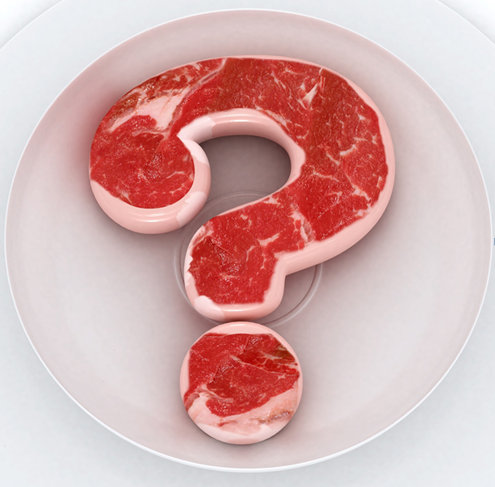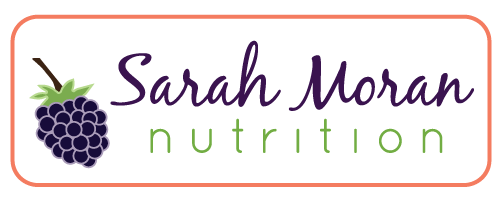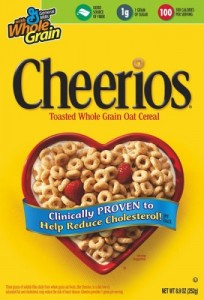First, let me start off by saying that this post is way overdue. I have had a lot of thoughts about the Paleo diet for a while now, but it can frustrate me so much that it's hard for me to sit down and get it all out in writing. There are several issues concerning the Paleo diet that irritate me, and I bet it's not what you're thinking.
In Part 1, I'll explain what the Paleo diet is and talk about some of the incorrect information that's floating around. 
Note: I made a video to accompany this post as well since I think it's an important enough topic to address both here and on YouTube. If you're the type who would rather watch than read, scroll down to the bottom of this post for the video.
What is Paleo?
The Paleo diet is based on the premise that the healthiest way for us to eat is the way our ancestors ate thousands of years ago, before the advent of modern agriculture. This means no to processed foods, sugar, grains, legumes (aka beans), or dairy and yes to wild and pastured meats, vegetables, nuts, seeds, and fruits. This is all according to Robb Wolf, a leader in the Paleo community. I don't necessarily agree with everything he says, but I think he gives a good breakdown of Paleo from the perspective of the Paleo enthusiast.
Comments from the uneducated.
I am sick and tired of listening to and reading criticism from people who don't even know what the Paleo diet is! Maybe it's that fact that there are so many diets out there, nutrition and health professionals can't keep up with it. Or, maybe it's the fact that it's assumed that every dietitian is an expert on every nutrition topic or issue. Either way, there are tons of quotes out there from people who simply don't know what they're talking about. I read one just yesterday that said the Paleo diet included whole grains, which is just plain wrong!
The main criticism I see is that it's just too hard to follow and that this is reason enough to discount it. Difficulty is relative and should not be the sole reason to agree or not agree with a particular style of eating. A diet that doesn't include a McDonalds hamburger twice a day might be "too hard to follow" for some people out there, but that doesn't mean we shouldn't recommend that they break the habit.
Followers who don't understand it.
I see lots of people who are supposedly following the Paleo diet, but then their food choices show that they don't have all the details. For example, the meats eaten are supposed to be wild (like our ancestors would have had) or grass-fed. This is one point that many people seem to miss. Every time I see a picture of someone gorging on factory-farm, highly processed, nitrate laden bacon with #paleo in the caption, I cringe. Quality matters and you should choose meat that comes from properly raised animals and not from a CAFO (Concentrated Animal Feeding Operation). Also, have your bacon, but have it in a reasonable portion. The pig is only partly bacon, and our ancestors would have eaten all of the other parts as well.
[x_video type="16:9, 5:3, 5:4, 4:3, 3:2" m4v="" ogv="" poster="" hide_controls="" autoplay="" embed='' no_container="true"]
Stay tuned for Part 2 for my thoughts on the diet itself and whether or not it's something we should all consider.
What have you heard about the Paleo diet? Do you think it's explained well in the media? Share in the comments below!






 It seems like there has been a lot of food in the headlines here recently. From mad cow disease in California to pizzas with a cheeseburger crust, the food industry has been showing itself (in more ways than one). One story that struck a nerve with me was
It seems like there has been a lot of food in the headlines here recently. From mad cow disease in California to pizzas with a cheeseburger crust, the food industry has been showing itself (in more ways than one). One story that struck a nerve with me was  The quality of the food you eat can make a huge difference in your health. This is especially true when it comes to animal products. The methods used to produce dairy products and meat are far from being natural processes and this trickles down to us when we ingest these foods. For example, conventional beef is raised in crowded feet lots where they are fed corn, rather than the grass they are designed to eat. This causes changes in the environment of their digestive tract which allows for the growth of potentially harmful microorganisms, such as E. coli, which would normally not be present. Also, the fatty acid content of the meat is much different from its grass-fed counterparts. In addition, these animals are pumped with antibiotics to fight off diseases that wouldn't be a major concern if the animals weren't raised in such deplorable conditions. The antibiotics also serve a second purpose of boosting growth. It's unknown how this works, but it's effective, so we do it anyway. Then some growth hormones are thrown in for good measure. This is why it is so important to be a picky eater when it comes to your meat and dairy. Choose organic in the grocery store and go the extra mile to seek out local producers who you can talk to directly. They will often use practices that go even farther than the federal organic standards and you'll also be supporting your neighbors and local economy while forging new relationships that help build your community. To find a local producer in your area and start a conversation about the way they raise their food, go to eatwild.com or visit your local farmers market.
The quality of the food you eat can make a huge difference in your health. This is especially true when it comes to animal products. The methods used to produce dairy products and meat are far from being natural processes and this trickles down to us when we ingest these foods. For example, conventional beef is raised in crowded feet lots where they are fed corn, rather than the grass they are designed to eat. This causes changes in the environment of their digestive tract which allows for the growth of potentially harmful microorganisms, such as E. coli, which would normally not be present. Also, the fatty acid content of the meat is much different from its grass-fed counterparts. In addition, these animals are pumped with antibiotics to fight off diseases that wouldn't be a major concern if the animals weren't raised in such deplorable conditions. The antibiotics also serve a second purpose of boosting growth. It's unknown how this works, but it's effective, so we do it anyway. Then some growth hormones are thrown in for good measure. This is why it is so important to be a picky eater when it comes to your meat and dairy. Choose organic in the grocery store and go the extra mile to seek out local producers who you can talk to directly. They will often use practices that go even farther than the federal organic standards and you'll also be supporting your neighbors and local economy while forging new relationships that help build your community. To find a local producer in your area and start a conversation about the way they raise their food, go to eatwild.com or visit your local farmers market.
 You've likely heard about the danger of trans fats on the news or seen products that proudly display "0 grams of trans fat per serving" on their packaging. But what are trans fats and how bad are they really? First, we need to start with a little chemistry. Fatty acids can either be saturated or unsaturated. These terms refer to the carbon-hydrogen bonds in the fatty acid chain. When a fatty acid is saturated, each carbon in the chain has the maximum number of bonds (4) while unsaturated means that there are less than 4 bonds, resulting in double bonds. So, saturated fats are holding all of the hydrogen they can and unsaturated fats are not. These differences impact the structure of the fat and, therefore, the way it is processed in the body. Trans fats occur when the hydrogens in an unsaturated fat are across from each other rather than next to each other. While this does occur naturally in minimal amounts, the man-made kinds are the ones that have been found to be harmful. In fact, research published in the New England Journal of Medicine has shown that a 2% increase in calories from trans fat increases your risk of heart disease by 23%!
You've likely heard about the danger of trans fats on the news or seen products that proudly display "0 grams of trans fat per serving" on their packaging. But what are trans fats and how bad are they really? First, we need to start with a little chemistry. Fatty acids can either be saturated or unsaturated. These terms refer to the carbon-hydrogen bonds in the fatty acid chain. When a fatty acid is saturated, each carbon in the chain has the maximum number of bonds (4) while unsaturated means that there are less than 4 bonds, resulting in double bonds. So, saturated fats are holding all of the hydrogen they can and unsaturated fats are not. These differences impact the structure of the fat and, therefore, the way it is processed in the body. Trans fats occur when the hydrogens in an unsaturated fat are across from each other rather than next to each other. While this does occur naturally in minimal amounts, the man-made kinds are the ones that have been found to be harmful. In fact, research published in the New England Journal of Medicine has shown that a 2% increase in calories from trans fat increases your risk of heart disease by 23%!